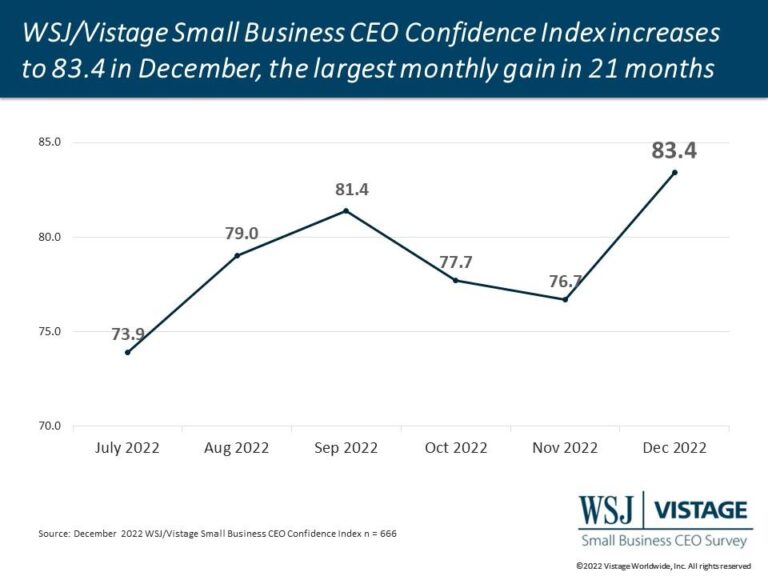US small business sentiment showed signs of improvement in May, reflecting growing optimism among entrepreneurs despite a backdrop of rising economic uncertainty. According to recent data, business owners are cautiously navigating challenges such as inflation and supply chain disruptions, balancing hopes for growth with concerns about the broader economic outlook. This mixed sentiment underscores the complex environment facing small businesses as they strive to recover and expand amid fluctuating market conditions.
US Small Business Confidence Rises Amid Signs of Economic Resilience
Following a period of caution, small business owners across the United States have shown increased optimism this May. Recent data indicates a rise in confidence, fueled by stronger-than-expected sales and a stabilizing labor market. Many entrepreneurs are beginning to feel the positive effects of sustained consumer demand despite ongoing concerns about inflation and supply chain disruptions. This renewed optimism is critical, as small businesses are pivotal for job creation and economic growth nationwide.
However, the landscape remains complex with mounting uncertainties clouding the outlook. Key concerns include:
- Inflationary pressures: With prices still elevated, purchasing costs remain a challenge for many businesses.
- Interest rate hikes: Borrowing costs are gradually increasing, affecting expansion plans.
- Labor shortages: Difficulty finding qualified employees persists in certain sectors.
- Global supply chain risks: Lingering disruptions continue to impact inventory management.
| Indicator | Current Status | Impact on Small Business |
|---|---|---|
| Consumer Demand | Moderate Increase | Boosts sales confidence |
| Inflation Rate | Around 5% | Raises operating costs |
| Interest Rates | Near 5% | Limits borrowing |
| Employment | Near Full | Creates hiring challenges |
Persistent Economic Uncertainty Challenges Growth Prospects for Small Firms
Despite an upbeat shift in confidence among small business owners, challenges persist as economic ambiguity continues to cloud the horizon. Many entrepreneurs remain wary due to fluctuating market conditions, supply chain disruptions, and unpredictable policy changes.This hesitation dampens expansion plans and hiring intentions, signaling a cautious approach to growth amid an environment marked by inflation concerns and rising interest rates.
- Inflation pressures: Persistent higher costs for materials and labor squeeze profit margins.
- Supply chain issues: Ongoing delays and increased expenses hinder operational efficiency.
- Policy uncertainty: Potential regulatory shifts create planning difficulties for small firms.
| Economic Factor | Impact on Small Businesses | Growth Implications |
|---|---|---|
| Inflation | Rising costs reduce purchasing power | Decreased profit margins limit investment |
| Interest Rates | Higher borrowing expenses | Constrains capital access for expansion |
| Supply Chain | Product availability affected | Operational delays hamper growth |
Inflation and Supply Chain Concerns Continue to Impact Business Decisions
Despite an overall improvement in small business sentiment in May, many entrepreneurs remain cautious due to ongoing inflation pressures and persistent supply chain disruptions.These challenges are forcing business owners to adapt their strategies,frequently enough delaying expansion plans and reassessing purchasing decisions to navigate cost uncertainties. The inflationary environment continues to drive up the price of raw materials, labor, and logistics, squeezing profit margins and causing firms to pass some costs onto consumers, which could dampen demand in the coming months.
Operational difficulties are compounded by unpredictable delivery schedules and shortages that hamper inventory management. Key sectors report difficulties sourcing essential components and fluctuating transportation costs, creating a complex landscape for forecasting and budgeting. The table below summarizes the primary concerns expressed by small businesses this quarter:
| Challenge | Impact | Business Response |
|---|---|---|
| Inflation | Increased costs of goods & wages | Raising prices; tightening budgets |
| Supply Chain Delays | Inventory shortages; missed deadlines | Seeking alternative suppliers; stockpiling |
| Labor Market | Hiring difficulties; wage competition | Increasing benefits; remote work options |
- Cost management remains a top priority as businesses recalibrate expenses amid volatile markets.
- Many firms are investing in technology and automation to offset labor shortages and improve efficiency.
- Contingency planning is becoming essential to mitigate risks stemming from ongoing economic uncertainties.
Strategic Recommendations for Small Businesses Navigating an Unpredictable Market
In today’s volatile economic landscape, small businesses must adopt agile strategies to sustain growth despite rising uncertainties. Leveraging digital tools to optimize operations and enhance customer engagement is no longer optional but essential. Businesses should invest in scalable e-commerce platforms, utilize data analytics for market insights, and harness social media advertising to reach target audiences efficiently. Additionally, diversifying revenue streams and revisiting supply chain partnerships can mitigate the risk posed by unexpected disruptions.
Financial prudence is critical amid shifting market dynamics. Maintaining healthy liquidity ratios and controlling overhead costs offer buffers during downturns. Below is a simplified approach for small businesses to balance risk and growth effectively:
| Focus Area | Actionable Step | Expected Benefit |
|---|---|---|
| Digital Adoption | Implement online sales and marketing | Access broader markets, increase sales |
| Financial Management | Regular cash flow analysis | Improve solvency and decision-making |
| Operational Versatility | Build agile supply chains | Reduce risk of disruption |
| Customer Relations | Personalize communications | Boost loyalty and retention |
To Conclude
As small business sentiment in the United States showed signs of improvement in May, underlying uncertainties continue to pose potential challenges for the sector. While optimism about economic conditions and hiring intentions has lifted spirits, concerns about inflation, supply chain disruptions, and geopolitical tensions remain prevalent among business owners. Moving forward, the ability of small businesses to navigate these risks will be critical in sustaining the positive momentum seen this month. Reuters will continue to monitor these developments closely to provide timely updates on the evolving landscape for America’s small enterprises.




